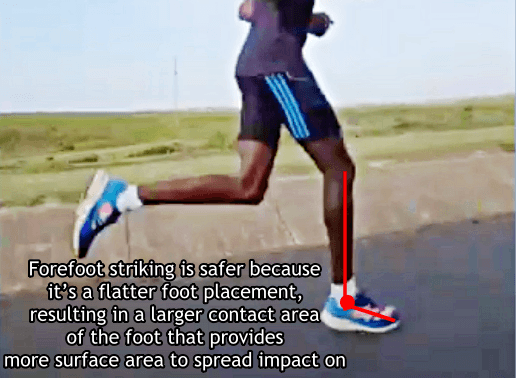There are important differences between heel strike and forefoot strike running, which is why foot strike matters in running because there’s nothing about heel strike running that provides protection against harmful impacts. Forefoot running on the other hand, engages the body’s natural mechanics that actually defend against high impacts. This is why barefoot runners, who land with a forefoot strike, are able to run safer than runners who heel strike in shoes.
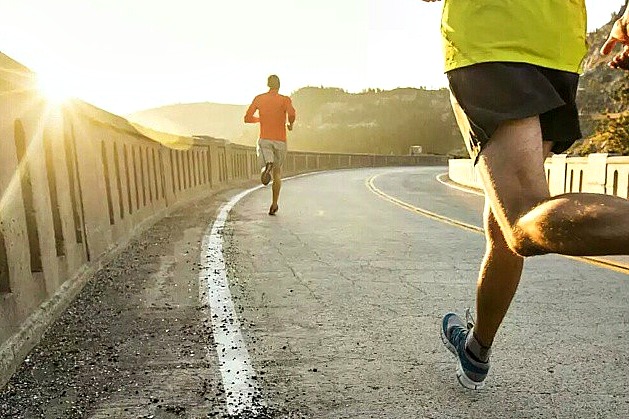
A long line of bio-mechanical research supports that heel strike running is considered a major source of injury because it produces a different variety of impact forces that are most directly responsible for shin splints, runners knee, lower back pain and long bone injuries. This is not the case in forefoot running as it actually softens your step while keeping your stride within a short, safer range.
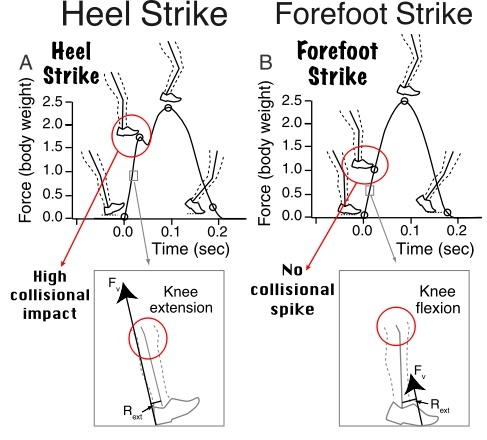 In fact, its becoming more well-established that the touchdown phase in heel strike running is most dangerous because it produces a distinct burst in collisional impact that the body cannot absorb. In other words, there’s too much intensive stop and go, or high braking, at heel strike which causes an excessive amount of impact.
In fact, its becoming more well-established that the touchdown phase in heel strike running is most dangerous because it produces a distinct burst in collisional impact that the body cannot absorb. In other words, there’s too much intensive stop and go, or high braking, at heel strike which causes an excessive amount of impact.
Worse still, the high brake force produces a shockwave that crashes into the shins, knees, hips and lower back, resulting in impact-induced degeneration. This is why heel strike runners have to rely on thick cushioned-heeled running shoes, which sounds like an obvious solution, but it turns out to complicate things even more! (Here’s why!).
In contrast, the classic features of forefoot running is it cancels out the burst in collisional impact at landing (shown below), while smoothing out other impact forces, like vertical loading and shear forces which are notoriously linked to bone fractures, and are high in heel strike running.
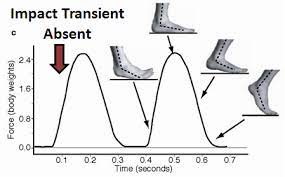
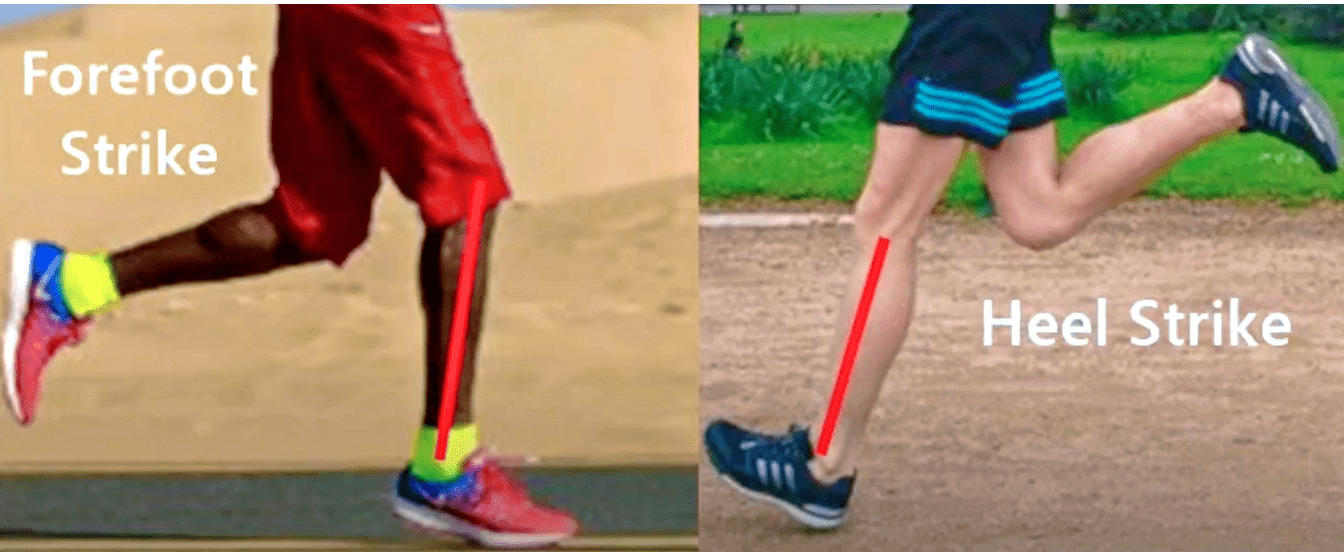
In forefoot running, there’s less burst of high impact because for one, landing on the front part of your foot causes the knee to flex (slightly bend) which puts in motion a shorter stride angle that breaks the flow of high impact.
For another, landing with a forefoot strike results in a smoother motion of the foot that produces less braking and jarring forces, making it easier to handle longer, harder, faster miles. At the same time, forefoot striking results in a larger contact area of the foot that automatically provides more surface area to spread impact on, shown below.
This is why every study involving heel strike runners who switched to forefoot running had the largest improvement in injury proneness because forefoot running fully resolves nearly every injury caused by heel strike running.
The Take Home Message
Because of its consistent scientific-backing on reducing injurious net forces, forefoot striking is the most functional way to use your feet when you run than heel strike running. And, the payoffs of forefoot running is more immediate than you think, especially if you run barefoot which is the ultimate mechanical re-calibrator. Here’s the published studies showing just that!
References:
[1]. Boyer E., Rooney BD and Derrick TR. Rearfoot and midfoot or forefoot impacts in habitually shod runners. Med Sci Sports Exerc, 2014; 46(7): 1384-1391.
[2]. Carter DR, Hayes WC. Fatigue life of compact bone—I. effects of stress amplitude, temperature and density. J Biomech. 1976;9(1):27–34.
[3]. Reilly DT, Burstein AH. The elastic and ultimate properties of compact bone tissue. J Biomech. 1975;8(6):393–405.
[4]. Schaffler MB, Radin EL, Burr DB. Mechanical and morphological effects of strain rate on
fatigue of compact bone. Bone. 1989;10(3):207–14.
[5]. Turner CH, Wang T, Burr DB. Shear strength and fatigue properties of human cortical bone determined from pure shear tests. Calcif Tissue Int. 2001;69(6):373–8.
Bretta Riches
BSc Neurobiology; MSc Biomechanics candidate, ultra minimalist runner & founder of RunForefoot. I was a heel striker, always injured. I was inspired by the great Tirunesh Dibaba to try forefoot running. Now, I'm injury free. This is why I launched Run Forefoot, to advocate the health & performance benefits of forefoot running and to raise awareness on the dangers of heel striking, because the world needs to know.
Latest posts by Bretta Riches (see all)
- Does Foot Strike Really Matter in Running? YES! - 17/04/2024
- Heel Lifts Increase Injury in Runners - 16/04/2024
- Are Minimalist Shoes Good for Seniors? YES! - 14/04/2024


